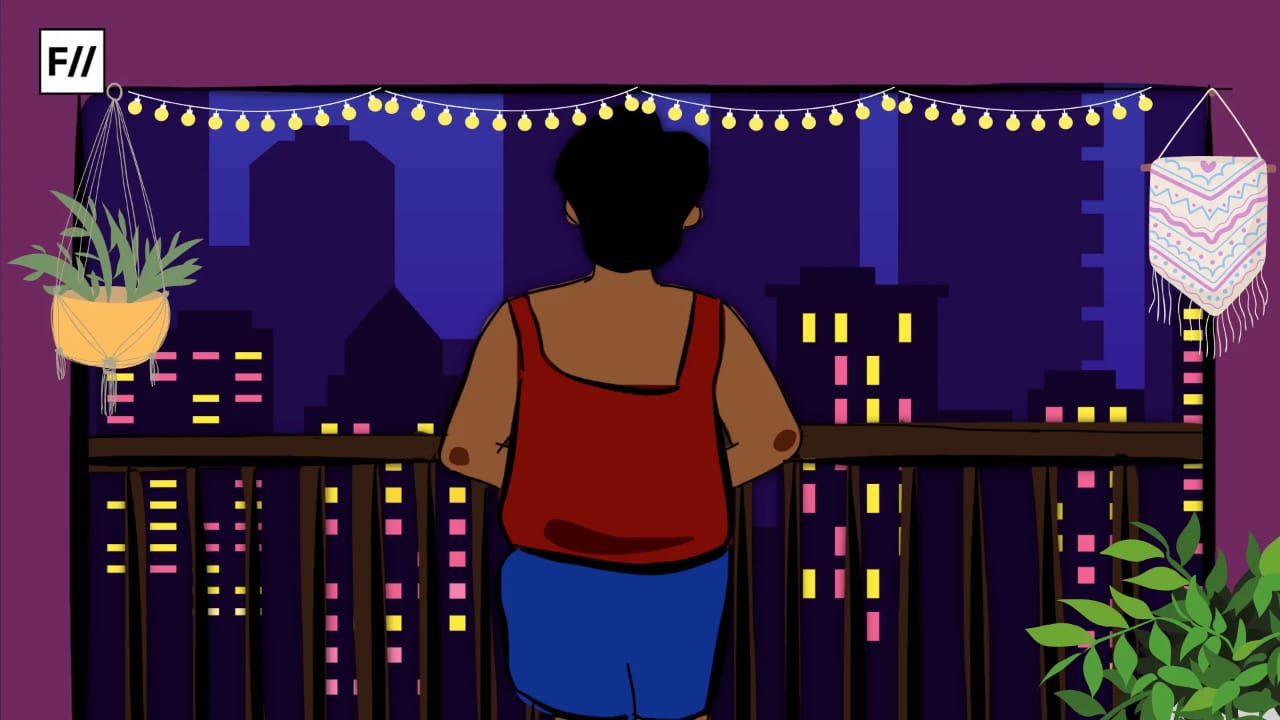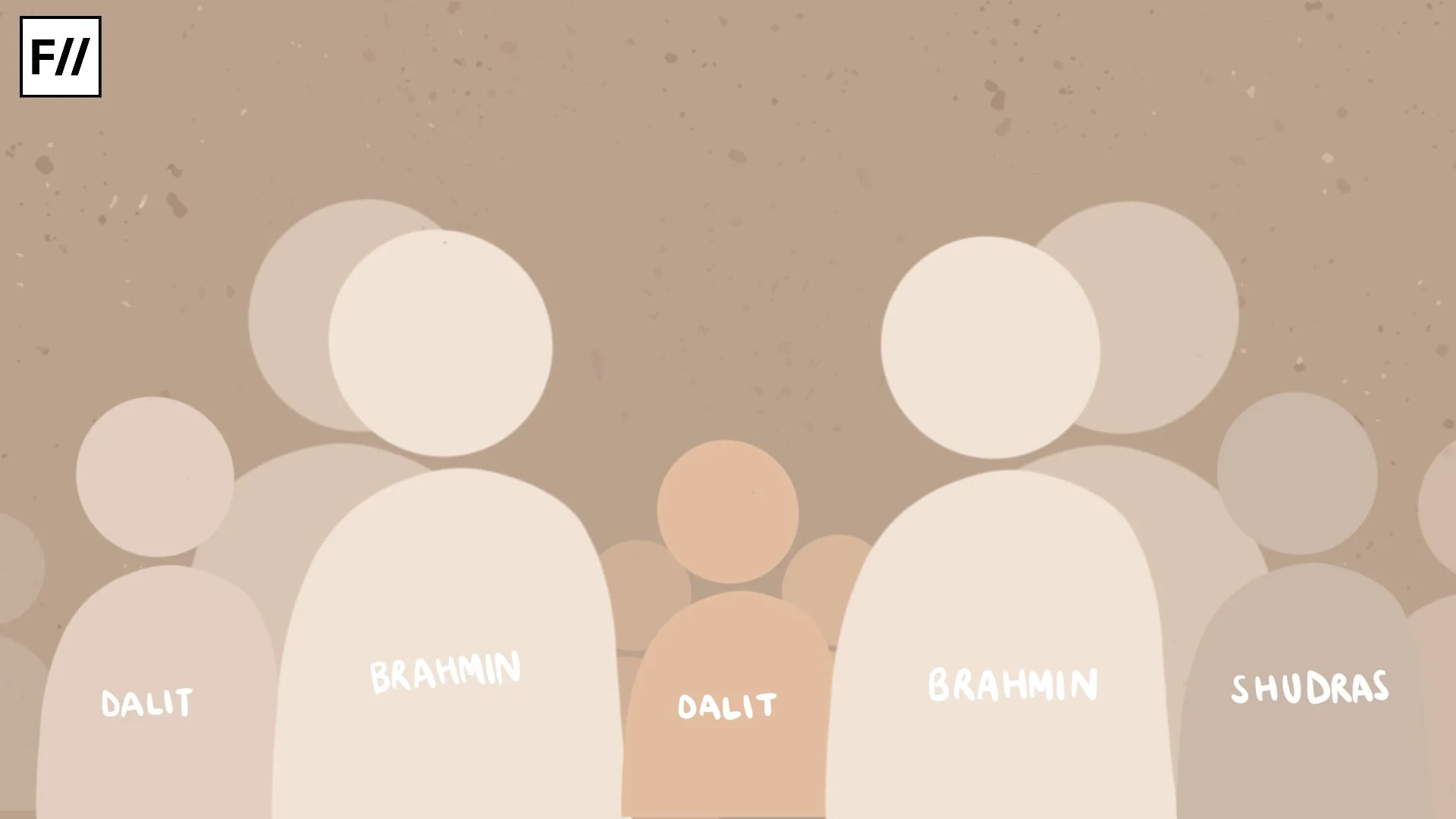Art is a manifestation of ideas. In India, Art holds a unique space for stirring civic consciousness and becoming the voice of the voiceless, including for the Dalit community. Placed at the bottom of the caste hierarchy, discrimination against Dalits continue to be a reality in present India. Within countless collective actions or individual heroism, fighting against these archaic practices, art has served a new agency for resistance, promoting an ethos of rationality and liberation through visual depictions.
The Dalit use of art in the form of paintings and literature requires venture and imperatives to thrive in mainstream society. One of the lenses to view this objective could be through understanding art in the form of paintings and literature that has been the medium of mobilization for Dalit movements in particular.
Traditional Use Of Art
Some of the famous art forms in India such as Mithila Painting (Madhubani Art) were started by the upper caste women. This art form is used to depict rituals and important occasions.
Lower caste women had little awareness of Hindu deities. They found it difficult to compete with their counterparts owing to social differences. This is where motivation and skill led to evolution of Dalit paintings in its current form. Dalit paintings are celebration of defiance of dominant social norms. It is a way of attaining agency to assert oneself, take pride and give expression to one’s lived experiences. In these paintings, they try to depict their icons to arouse and consolidate the Dalit identity. The women belonging to the Dusadh and Chamar (Jatav) community had developed their own distinct style of paintings and various new themes were included to master the art of Mithila painting distinct from the paintings made by upper caste women.
These earlier use of art in the form of paintings, presented them in distinct ways was the first step Dalits took in asserting their existence in society. It began with the basic motive of generating income and as aesthetic pleasure, both of which were denied to them. At very small scale, they sought opportunity in creating these paintings to overcome past patterns of discrimination and structural inequalities. This step paved way for contemporary art form, a stepping stone towards ensuring Dalit inclusion in political society.
The history of Godna style of painting lies in the discrimination suffered by the Dalit women when they were forced to wear ornaments of iron and inferior materials. Tattooing (Godna) was thus seen as an inversion, which publicly distinguished the lower castes. Shanti and Chano Devi experimented with natural colors and created more distinctive style which became the main identifier of Dalit Godna paintings. These natural colors were extracted from cow-dung base, leaves, flowers, vegetables, barks, and roots. These paintings portrayed scenes from their day-to-day lives, nature, chores of Dalit women and included the depiction of god Salhesa (representative of all Scheduled Castes). It marked a major shift in beginning of Dalit contribution in the world of Mithila paintings.
Gobar style of painting or art form, started by Jamuna Devi, drew inspiration from Bharni and Kachni paintings which were composed of Brahaminical or high caste rituals and deities. These were made by giving the paper a light Gobar (Cow dung slurry). Jamuna Devi was one of the first Dalit woman to start commercialized painting. The distinctive style of painting she pioneered would go on to attain huge recognition and demand in coming times, besides being emulated by painters from upper caste as well.
Geru style of painting depicted deities, animals and plants boldly with a few bright color contrasts mostly in brown. However, this style did not attract many buyers and soon disappeared. Geru painters such as Bhagvati Devi stopped painting. Women from upper and the Scheduled Castes practiced distinctive but overlapping styles of art; it is said that the Brahminical religious form was produced by upper castes and the ‘secular’ forms drawn from daily life were developed and depicted by the lower caste women.
These earlier use of art in the form of paintings, presented them in distinct ways was the first step Dalits took in asserting their existence in society. It began with the basic motive of generating income and as aesthetic pleasure, both of which were denied to them. At very small scale, they sought opportunity in creating these paintings to overcome past patterns of discrimination and structural inequalities. This step paved way for contemporary art form, a stepping stone towards ensuring Dalit inclusion in political society.
Contemporary Use Of Art
The contemporary art work was made by Dalit painter, Savindra Sawarkar who projected Dalit people’s pain and anguish in the visual culture, which are unique in the Indian context. He is the first Indian artist to visualize the Chaturvarna through pictorial signs as a critique of caste and inequality.
In his famous painting, ‘Foundation of India’, he depicted the political democracy of India through four blocks, arranged one upon the other. First block represents the angry face of Brahmin; a conduit of power. Second, arms of the Kshatriya extended signifying authority lies in their hands. The third cube represents the Vishaya, revealing their relentless appropriation of social surplus. The Shudra and the Antyaj together, forming one block, reflected signs of Buddhism, the Stupa and the Chakra pointing toward the possibility of political and religious solidarity among the hierarchically divided lower-castes. The feet that bear the burden of these four blocks are those of women, pushed down by all, even by lower-caste solidarities, yet they walk. Savindra Savarkar’s artwork conveys non-violence.
Other recognized paintings such as ‘Untouchable Couple with Om and Swastika’. The untouchable figures have two dark-dots for pupils in red signifying anger. They carry a clay pot made to spit into each painted with the sacred Hindu sign of Om and Swastika signifying caste burden. The silent outpour of the untouchable couple echoes with the sound of the bells on the stick. And in ‘Two Untouchables under the Black Sun’, shows two untouchables sitting with two crows, signs of untouchability. The sun is not black during an eclipse alone; it is always eclipsed for untouchables, inhibiting progress of culture and identity.
Other recognized paintings such as ‘Untouchable Couple with Om and Swastika’. The untouchable figures have two dark-dots for pupils in red signifying anger. They carry a clay pot made to spit into each painted with the sacred Hindu sign of Om and Swastika signifying caste burden. The silent outpour of the untouchable couple echoes with the sound of the bells on the stick. And in ‘Two Untouchables under the Black Sun’, shows two untouchables sitting with two crows, signs of untouchability. The sun is not black during an eclipse alone; it is always eclipsed for untouchables, inhibiting progress of culture and identity.
Dalit Literature
Dalit literature serves the purpose of participation and opposition in subtle ways. It intends to gather support of masses in two ways: a) emotionally connect all the members of Dalit community, and, b) try to bring change in the perception of caste by popularizing Dalit struggle. The context of literary writing may vary but it ultimately tries to attain political activism and to initiate reassessment and restructuring of history and culture.
Dalit literature is self-explanatory as it illuminates their sufferings, it as expresses how their experiences paved the way for gaining the political consciousness, self-respect and dignity for their community and for their own individual selves. The actual Dalit Literary Movement started in the 1960s. The writings of Dalit writers are reflective of lived realities of their individual and collective experience which makes it the literature authentic, sharing a collective relationship to a common cause, common identity, and a common political stance.
Raja Dhale of the Dalit Panthers created a sensation in the country by writing a controversial article titled “Kala Swatantra Diwas” (Black Independence Day), in 1972. The article was full of anger and pain because The Elayaperumal Committee’s report on Dalit atrocities was out. It included cases of atrocities nationwide against Dalits. Dalit women were raped, Dalit men and women were assaulted for accessing a public water source, lashed for wearing good clothes, beaten up for wearing slippers. This article by Dhale created rage and built recognition for the newly formed Dalit Panthers. The disenchantment of educated Dalit youth led to the rise of the Dalit Panthers with the politics of the Republican Party of India as it wasn’t truly representative of them. A large section of people in many parts of Maharashtra as well as in other states, such as Tamil Nadu and Karnataka took up the name ‘Dalit Panthers’.
Another such example of literary work was Joothan, an autobiography Omprakash Valmiki which accounts for faced lived experiences of caste based discrimination. It was one the important literary works emerged during the Post-Independence period. Joothan helped in revolutionary transformation of society and human consciousness. In his work, he describes his life as an untouchable located at the bottom of social hierarchy and forced to eat Joothan (leftovers) since birth which signifies pain and sufferings. He says that the element of caste is deeply rooted in Indian society and is not open to change, that one is known by his/her caste which determines their destiny.
Dalit literature is self-explanatory as it illuminates their sufferings, it as expresses how their experiences paved the way for gaining the political consciousness, self-respect and dignity for their community and for their own individual selves. The actual Dalit Literary Movement started in the 1960s. The writings of Dalit writers are reflective of lived realities of their individual and collective experience which makes it the literature authentic, sharing a collective relationship to a common cause, common identity, and a common political stance.
Also read: A Dalit Woman’s Body In The Indian Courtroom
Other forms of Dalit Art
We also need to turn the gaze to other forms of art along with use of paintings and literature.
Dalit Panthers against the prevailing caste atrocities brilliantly made use of art and aimed at bringing together the aesthetic and the political. ‘Rava’ and ‘Samuh’ were pocket-sized little magazines published in the early 1970s that featured early works of many Dalit Panther poets, writers and artists. There were certain unique things about these little pocket magazines. They made minimal use of colours but on the front cover title was written use red colour signifying rage. Popular design sensibilities were also challenged with use of letters in place of numbers.
Rajyashri Goody’s use of art and effort is supported by Clarks House Initiative, Mumbai. Her exhibition, named Eat with Delight tries to celebrate food because there is a history behind relating to experiences of accessing food. Her work is a mixture of political purpose, social emancipation and literature. She says a book like Manusrmiti is so powerful but physically weak as it is just a paper which has brought horror and pain to people. She pulped the pages into plain sheets of paper with humour that is the act of making laddoos out of them for consumption.
Rajyashri Goody’s use of art and effort is supported by Clarks House Initiative, Mumbai. Her exhibition, named Eat with Delight tries to celebrate food because there is a history behind relating to experiences of accessing food. Her work is a mixture of political purpose, social emancipation and literature. She says a book like Manusrmiti is so powerful but physically weak as it is just a paper which has brought horror and pain to people.
The activists carried a mini statuette of Dr. B.R Ambedkar holding the Ashok Chakra, a wheel. As wheels turn, which is high becomes low and, low becomes high. This is an example of productive masses staging the intrinsic idea of change and of revolution. The use of these symbols and visuals at certain points comes with the aim to bring about social –political revolution. The site Dalit Prerna Sthal has to be seen as a model of ‘high art’. Dalit communities attempt to garner a kind of cultural capital, develop knowledge system as well to represent inspiring leaders and role models, larger struggle to seek recognition and dignity in public sphere.
During the Self-Respect movement, Parai– a hollow drum, one of the oldest percussion instruments emerged as a symbol. Most Dalits stopped playing the instrument. The Parai was considered a funereal instrument played only by Dalits which made them to question why Tabla and Mridangam were ‘played’ but Parai was beaten? Just because it is an in instrument played by Dalits? Theyyam dance (practiced by Dalit) has become a strong medium for spreading the message of social equity and social harmony in Kerala.
Conclusion
Dalits in India were influenced by the conditions of their social life that not only shaped their thoughts and feelings but also sense of self, relations with others and potential to act which got manifested when they made use of art in the form of paintings and literature.
Also read: The Impact Of The Rise Of Right-Wing Politics On Dalits In India
We must stop turning a blind eye to the reasons behind their marginalization. We must respect their use of art as it screams of past injustices because art for them is no less than any affirmative action in empowering and mobilizing generations of Dalit people far more effectively in contemporary times than before. Art opens the space for the marginalized to be seen and heard.
References
- Framing Affect: Visual Representation of Dalits
- Daily O
- Indigenous Indian
- Rajyashri Goody
- Caravan
- Dalit Art Forms and Tourism Promotion: Case Study of Theyyam Dance by Jacob John* and Megha Jacob
- News Click
- Indian Express
- Open Democracy
- Live Mint
Featured Image Source: Indian Folk
About the author(s)
Bharti is pursuing Political Science Honors (2nd year) from Indraprastha College for Women, University of Delhi.




